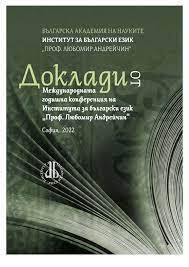Човекът и земята в средновековния Земеделски закон
The Man and the Land in the Medieval Farmer’s Law
Author(s): Mariyana Tsibranska-Kostova
Subject(s): Language studies, Theoretical Linguistics, Applied Linguistics, Historical Linguistics, Philology
Published by: Институт за български език „Проф. Любомир Андрейчин“, Българска академия на науките
Keywords: Slavic translations of the Farmer’s Law; Old Bulgarian lexis
Summary/Abstract: The author aims at analyzing a group of lexical variants in three thematic areas, namely names for land surface and natural relief, for tools and equipment and for persons engaged in agricultural activity, according to the most important Slavonic witnesses of the Byzantine Farmer’s Law. These are the Russian compilation Law Books, and Ms. Slav. 466 from Hilandar monastery, both dating from the 15th century. Despite they attest two different translations, the author argues that they could represent the continuity with the more archaic state in the written dissemination of the Code, conditions for whose translation first arose in the 10th century Bulgarian kingdom.
- Page Range: 276-283
- Page Count: 8
- Publication Year: 2022
- Language: Bulgarian
- Content File-PDF

